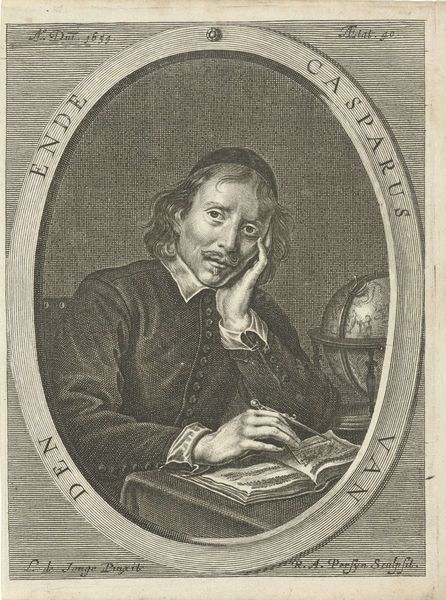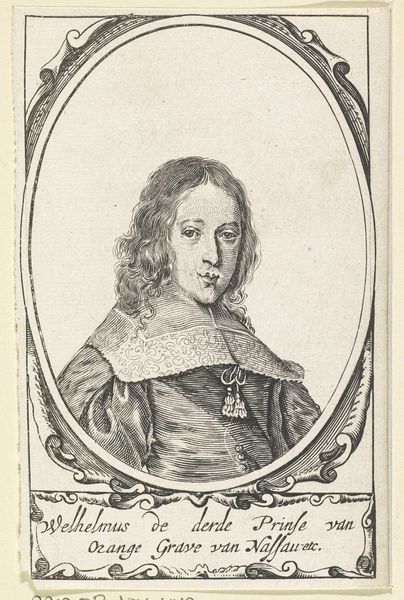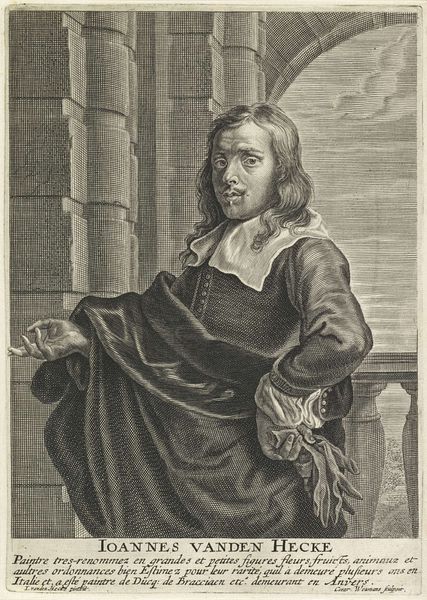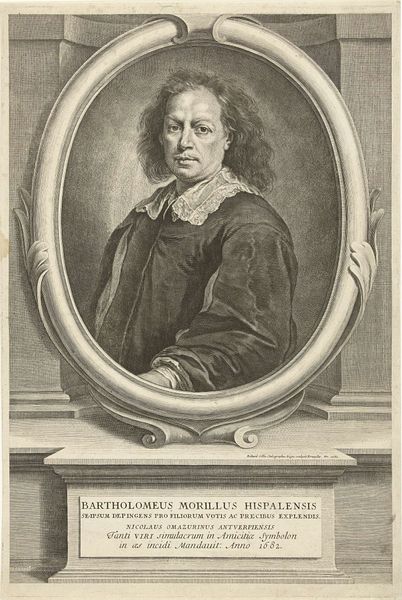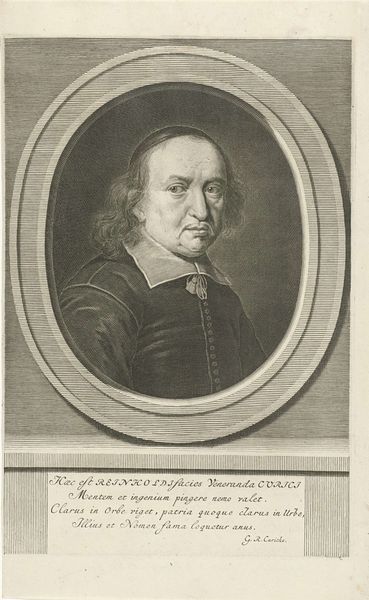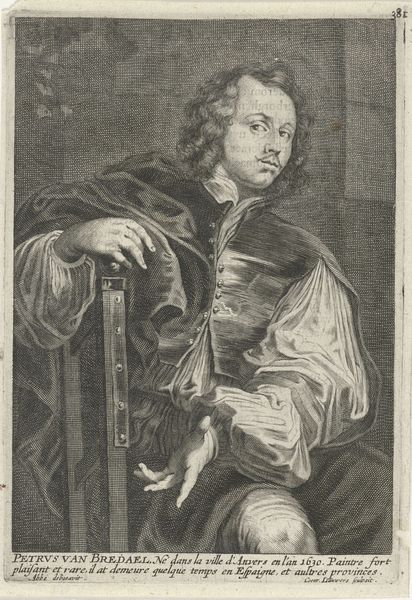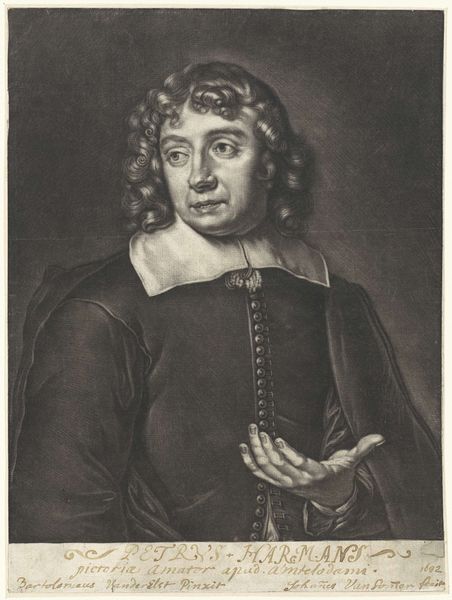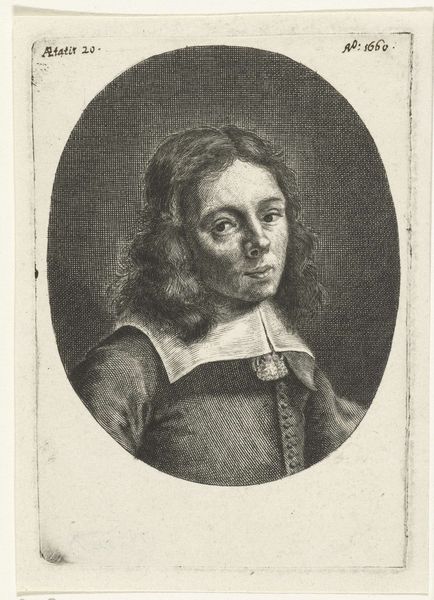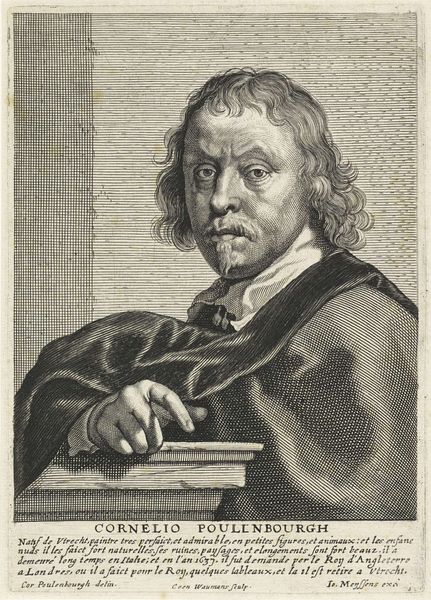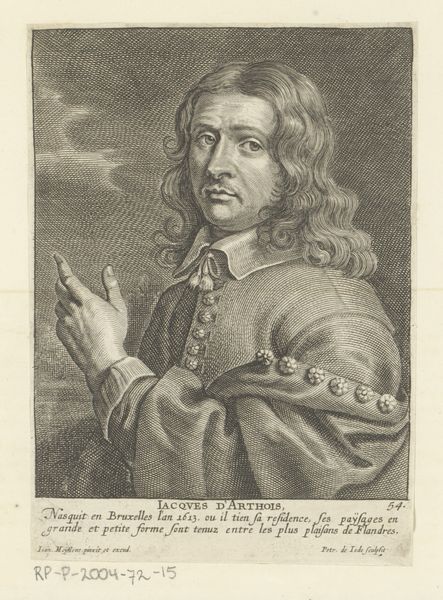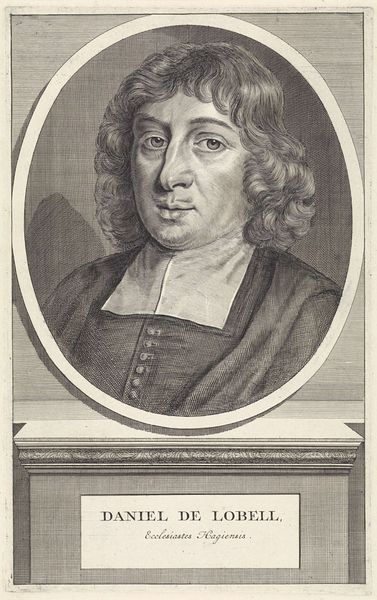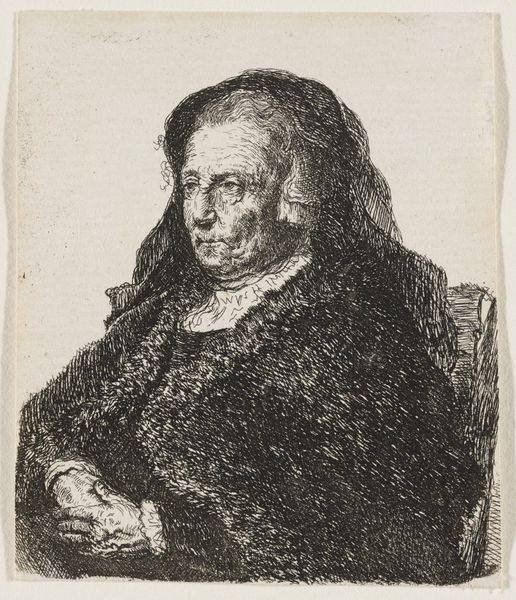
engraving
#
portrait
#
baroque
#
dutch-golden-age
#
old engraving style
#
portrait drawing
#
engraving
#
realism
Dimensions: height 195 mm, width 134 mm
Copyright: Rijks Museum: Open Domain
Richard Collin created this portrait of Gaspar de Witte, likely in the late 17th century, using engraving techniques. This process involves meticulously carving an image into a metal plate, applying ink, and then pressing it onto paper. The intricate lines and textures you see result from the engraver's skillful manipulation of tools to create varying depths and widths of grooves. Look at how this technique captures the soft, flowing curls of de Witte’s hair and the folds of his drapery. The contrast between light and shadow gives the portrait depth and volume. Engraving was a labor-intensive process, demanding precision and expertise. This print represents a significant investment of time and skill, reflecting the value placed on craftsmanship and artistry. Unlike painting, which can be unique, engraving allows for the reproduction and dissemination of images, making art more accessible. It blurs the boundaries between fine art and craft, highlighting the social and economic aspects of artistic production. Appreciating the materials, the making, and the context enriches our understanding of Collin’s work.
Comments
No comments
Be the first to comment and join the conversation on the ultimate creative platform.
